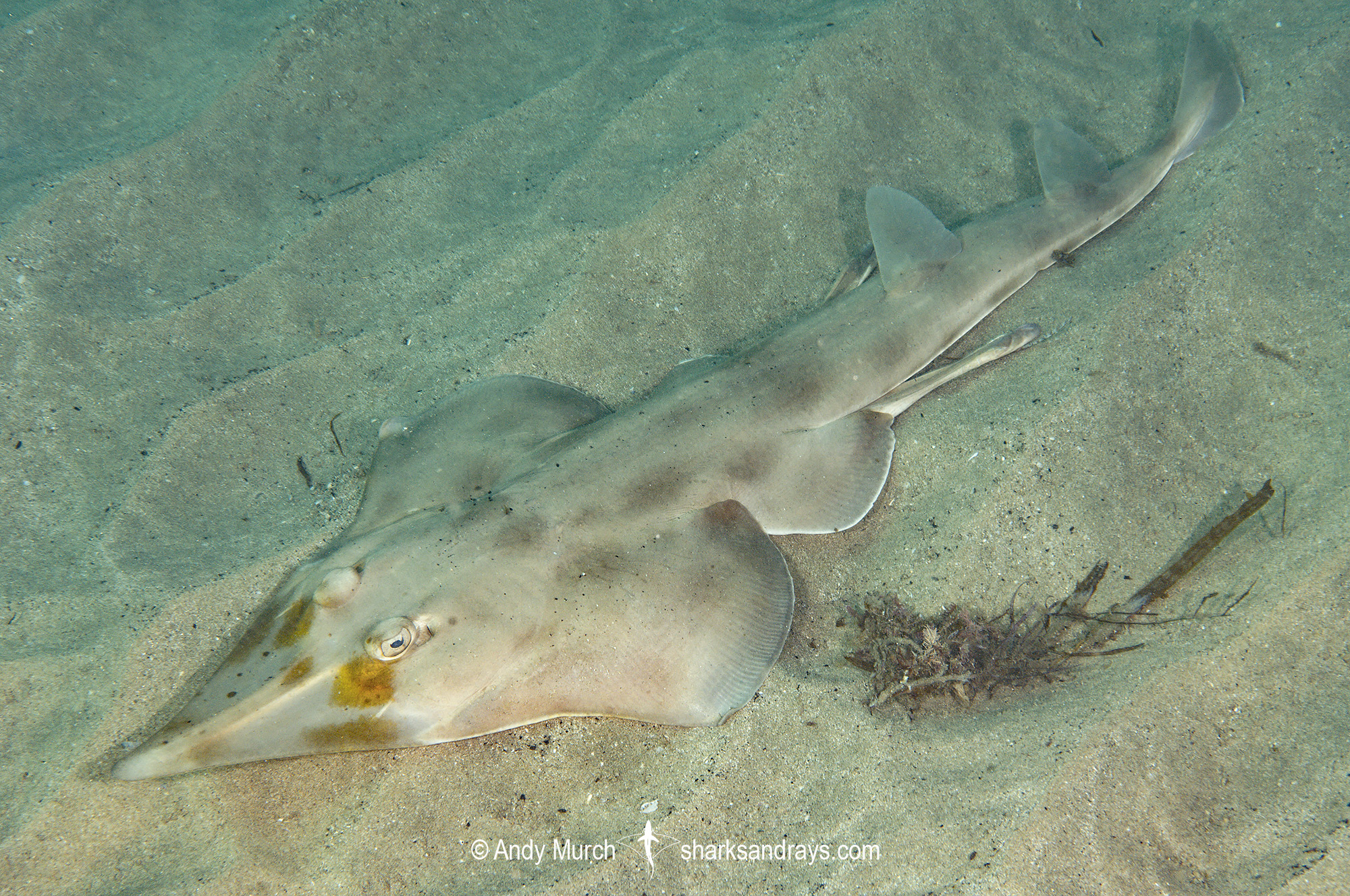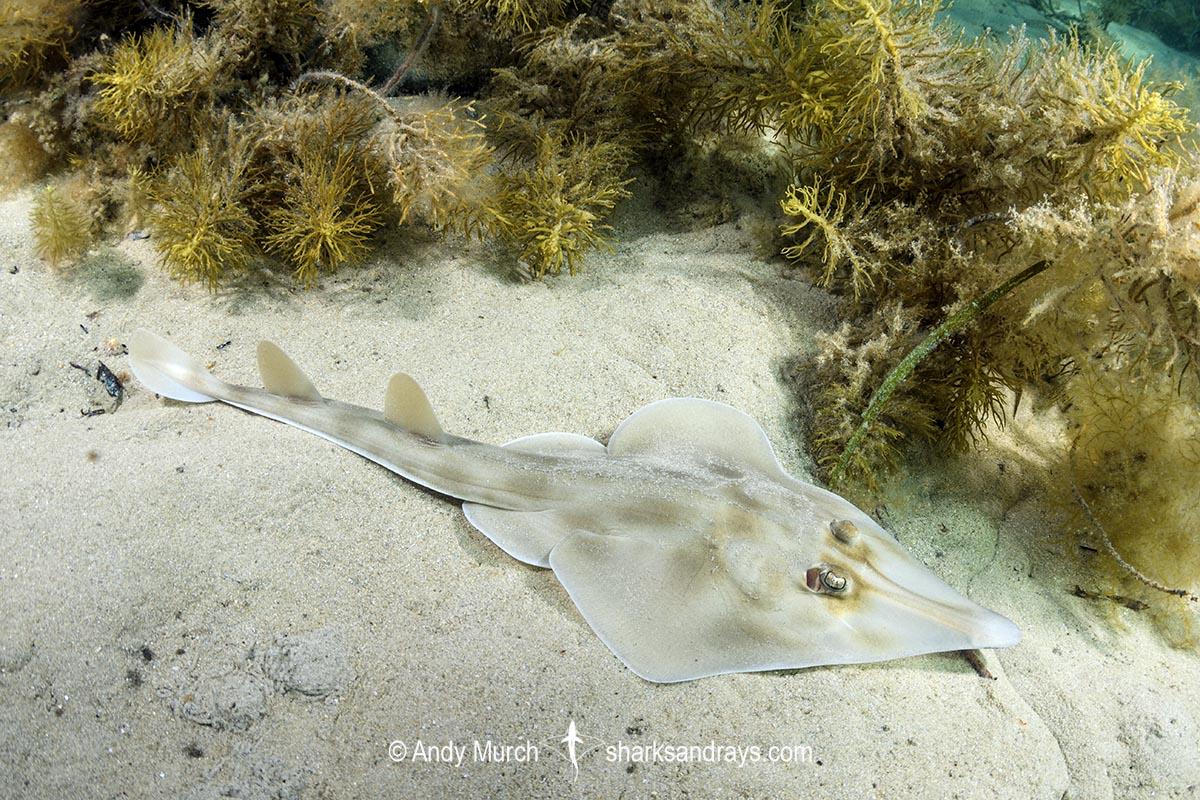Common name(s)
Eastern Shovelnose Ray, Long-snout Guitarfish.
Identification
A medium-sized shovelnose ray with a very long, narrow, acutely pointed snout with narrowly separated rostral ridges. Eyes small. Snout length 5.7-7.6 x orbit length. Spiracles without lobes or skin folds. Nostrils transverse. Nasal curtain absent. Small, pointed nasal flaps barely extend posteriorly beyond nostril opening.
Anterior margins of disc weakly concave with subtle convexity at eye level. Pectoral apices angular, posterior margins broadly rounded. Skin covered in small denticles. 2-3 pre-orbital thorns, 1-2 thorns over spiracle, 2 groups of small thorns on each shoulder (poorly defined in adults), and 18-20 midline thorns along back and tail.
Tail robust, 1.2 x disc length. Dorsal fins large and well separated, with narrowly rounded apices. Caudal fin triangular, without a defined lower caudal lobe.
Colour
Dorsum greyish-brown with large, diffuse, darker brown, dusky blotches. Blotches on snout may be golden. Rostral cartilage pale. Ventrum white with irregular small dark flecks.
Size
Maximum length 120cm. Size at birth 13-15cm.
Habitat
Tropical/warm-temperate seas. Benthic on sandy beaches, estuaries, sometimes adjacent to coral reefs, and offshore on continental shelf. From close inshore to 220m but usually shallower than 100m.
Distribution
Southwestern Pacific. Confined to the east coast of Australia from Halifax Bay in north Queensland, southward to Merimbula in southern New South Wales.

Conservation Status
LEAST CONCERN
Eastern Shovelnose Rays are regularly caught in various commercial fisheries, especially trawl fisheries. They are discarded in Queensland, but retained and marketed in NSW.
Recreational fishermen often catch Aptychotrema rostrata, and sometimes kill them to avoid catching them again.
Currently, even where Aptychotrema rostrata is targeted, it is still relatively abundant.

Reproduction
Aplacental yolksac viviparous. Litter size 4-18. Gestation length 3-5 months.
Diet
Feeds mainly on benthic crustaceans and small fishes.
Behavior
Enters shallow estuaries to feed. Rarely moves offshore; maximum recorded depth limit stems from only 2 individuals that were caught at 220m.
Reaction to divers
Easy to approach. Can be skittish but generally tolerant of divers unless molested.
Diving logistics
The eastern shovelnose ray is a common guitarfish (locally called a banjo ray) in Northern New South Whales. One particularly good spot to find this species is while shore diving on the main beach at South West Rocks. On one dive in July I encountered 5 individuals laying on the shallow sand between the coral heads.
What’s new
View our full list of updates
Similar species
Western Shovelnose Ray Distinguished by slightly broader, shorter snout, and more westerly range from southern and western Australia.






